Despite losing 2-0 to the mighty Paris Saint-Germain, AS Monaco impressively held their own against the Parisian giants. Playing excellently in the first half especially, Niko Kovac’s men imposed themselves on their foes on both sides of the ball, on a night where they unfortunately made too many mistakes and failed to take their chances.
With this in mind, this gives us the opportunity to focus on three tactical takeaways from the entertaining clash at the Parc des Princes.
High press effective early
AS Monaco raced out of the blocks and immediately put the home team under duress with their energetic high pressing. Causing a turnover inside two minutes, this was a sign of things to come, for not long after their harrying was the catalyst for creating the chance where Sofiane Diop hit the woodwork.
Deploying his team in a variant of his nominal 4-2-3-1 that often looked more of a 3-4-1-2 due to one of the fullbacks stepping higher, Kovac’s strategy bore fruit.
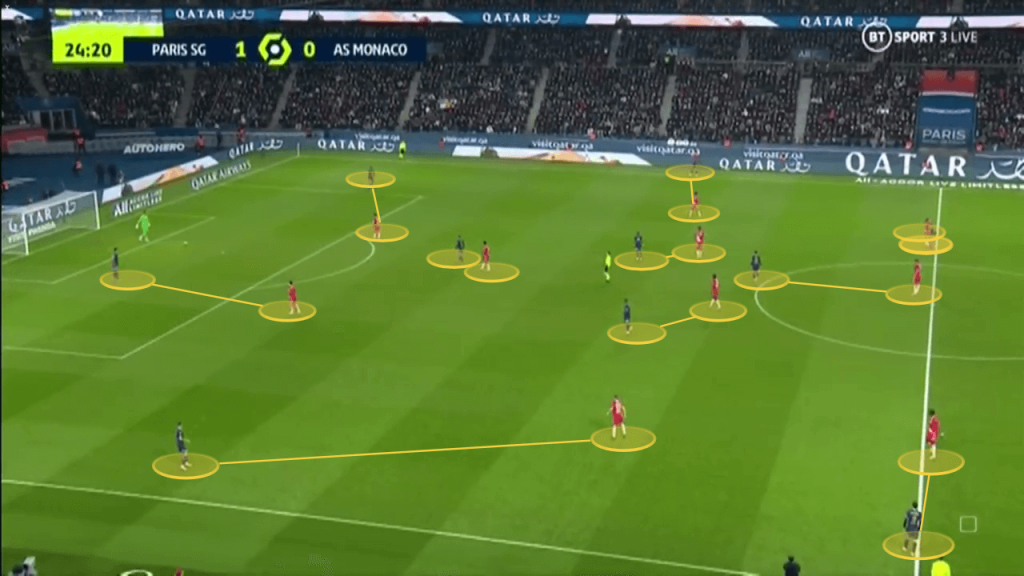
To deal with PSG’s two centre backs, Wissam Ben Yedder would be joined by the ball near winger who tucked infield. Diop would then mark PSG’s deepest midfielder (usually Marco Verratti), while the far side winger would be positioned in the half space so they could access their nearby fullback and have access to the closest PSG centre midfielder.
Aurelien Tchouameni and Youssouf Fofana would typically mark Idrissa Gueye and Georginio Wijnaldum in midfield, as they remained alert to the dropping Lionel Messi.
The role of the fullbacks was another interesting feature, as one would press out to the ball side PSG fullback while the other tucked in and formed a back three to help deal with Kylian Mbappe, Angel Di Maria and the legendary Messi.


Producing many errors and ball recoveries in key areas so they could rapidly attack the unset PSG defence, their coordinated collective output here was fantastic to see (as can be seen in the graphics below).
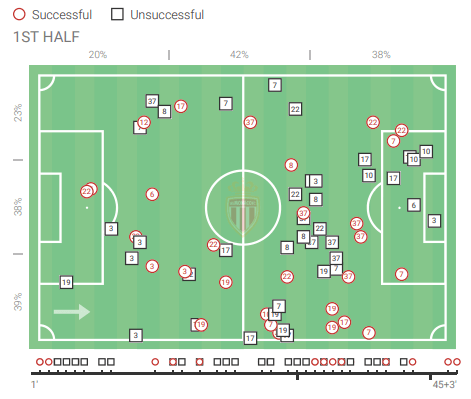
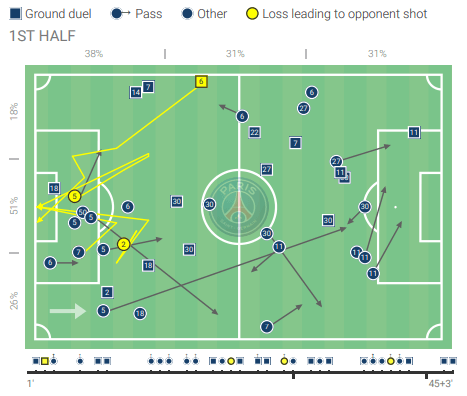
Clearly well drilled and knowing their responsibilities, this aspect of their game effectively unsettled PSG during build up while generating a host of promising openings for Kovac’s men. It was just a shame they couldn’t finish their chances and hurt their adversaries on the scoreboard.
Strategic overloads
Seeing as Monaco looked to pass out from the back whenever possible and PSG would typically commit two of their midfielders to marking Tchouameni and Fofana, the role of Monaco’s attackers to drop deep and form overloads was crucial.
Typically venturing into the half spaces to avoid the attention of the PSG holding midfielder, the likes of Diop, Aleksandr Golovin, Gelson Martins and Ben Yedder did a fine job of forming 4v3 and 3v2 superiorities. So valuable towards Monaco progressing the ball in build up to bypass the PSG press, they served as a terrific outlet.
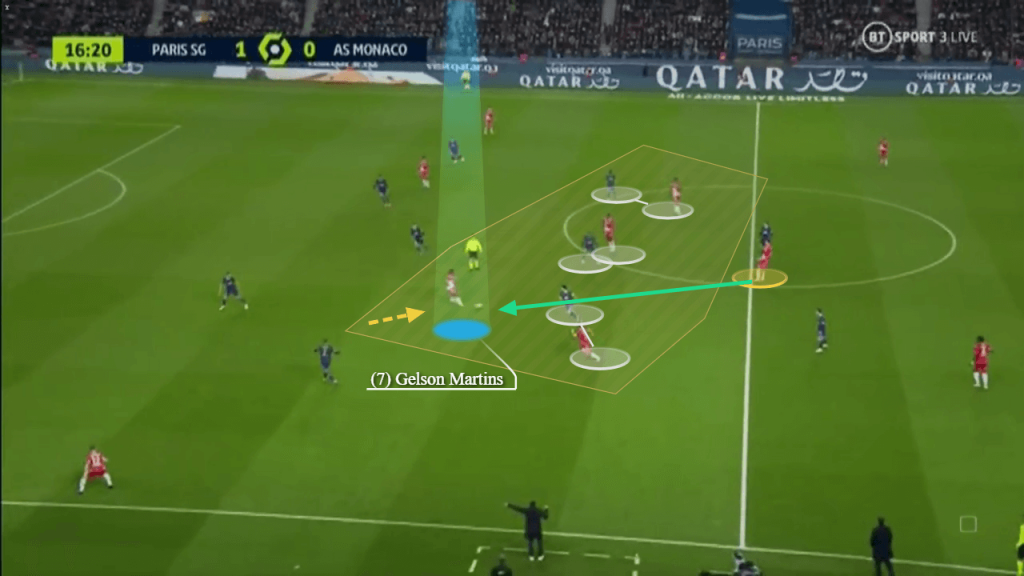
Getting just far enough away from the PSG defensive line so their defenders were wary to track them deep, the graphic below provides a fine example of how smartly they found spaces within PSG’s block. Here, with Fofana, Diop and Tchouameni occupying three players, Golovin shrewdly drops deep to be the free man to receive while manufacturing a 4v3 overload.
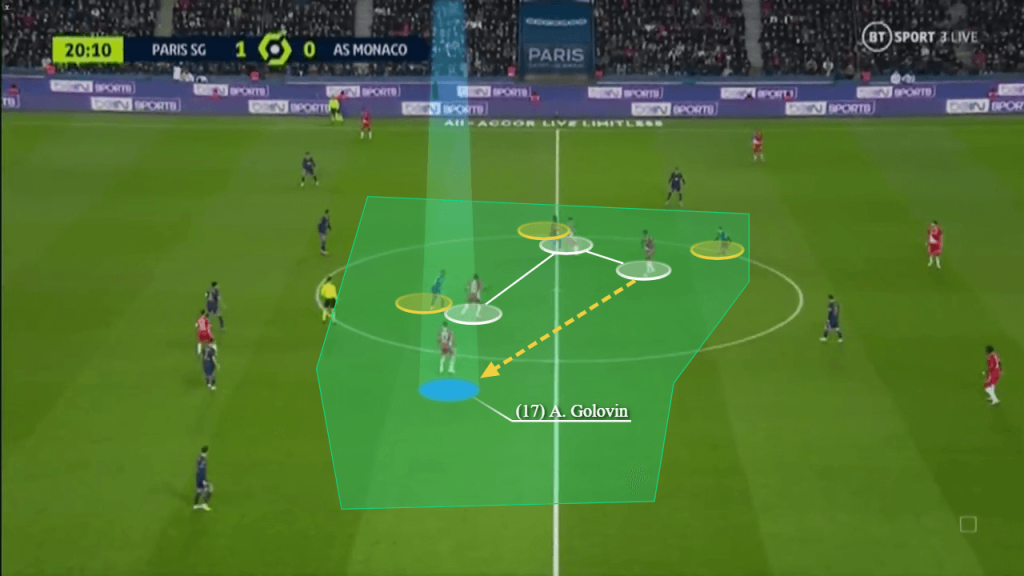
Frontline positioning and mechanics
Kovac’s decision to set out his team in what was a mix between a 4-2-3-1/4-4-2 going forward certainly gave PSG plenty to think about. Causing issues for their trackers with their slick rotations, opposite movements and good understanding, opponents were always on their toes and unable to settle into a pattern of best to deal with their foes.
Pinning and occupying defenders well to help make room for one another, Monaco would regularly go 4v4 against PSG’s backline. In doing so, this gave the home team minimal room for error, for if they made one bad move a Monaco attacker could lose their man and be in on goal or drop deep to exploit gaps between the lines.
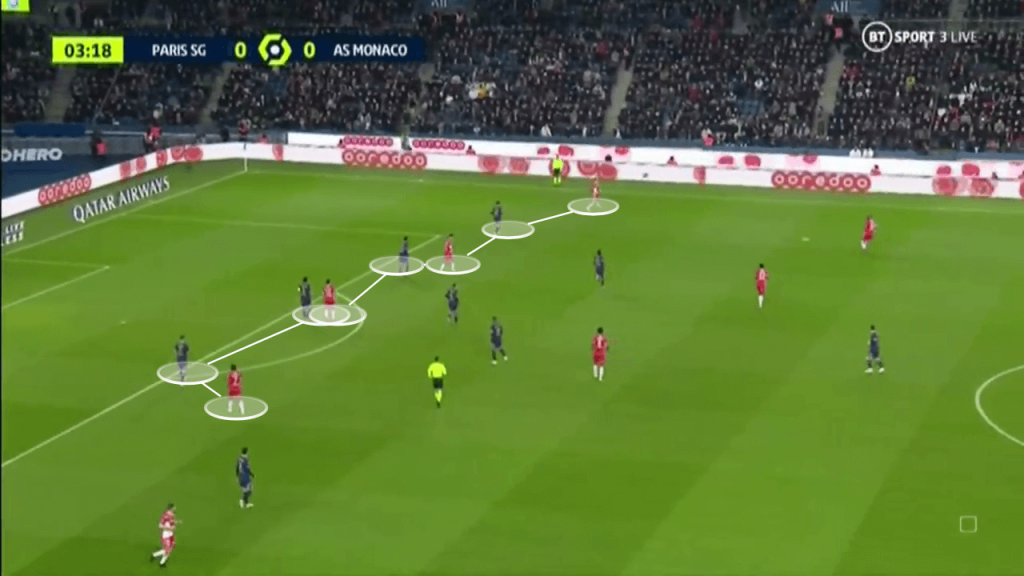
Although they manipulated their foes on many occasions, Monaco ultimately couldn’t punish their highly fancied opponents. But nonetheless, their mechanics to unbalance their opposition to conjure space in front of and in behind PSG’s back four was encouraging.










